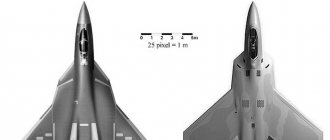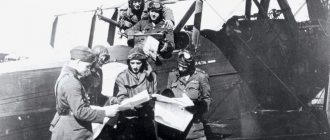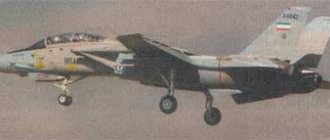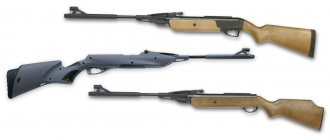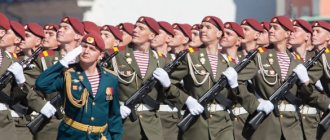Industry
00:00, 09.03.2021 18
Photo: uacrussia.ru
Today I would like to talk about the Russian aviation industry, its current state and plans for development, especially since there are certain reserves in the hangars that allow us to be optimistic about the future of aircraft manufacturing in Russia, writes a columnist for Realnoe Vremya, an economist with extensive banking experience, in another article Arthur Safiulin. We must pay tribute to the Russian authorities in the fact that slowly but surely the new models are getting closer to the series, and in several segments. Even ten years ago it seemed that our fate now was purely narrow-body regional ships, such as the Sukhoi Superjet 100. Everything else could only be dreamed about.
The current state of the aviation industry - the Soviet reserve is almost exhausted
In February 2006, a decree was signed on the creation of the United Aircraft Corporation (UAC). 15 years after the creation of the UAC, it became clear that plans to capture the world market were too optimistic. There is a return to the idea: as in Soviet times, the aircraft produced will fly primarily in the “home” sky and be operated by Russian carriers. The new concept will make it possible to put the medium-range MS-21 on the wing and breathe new life into the short-haul Sukhoi Superjet 100, and then begin production of the Il-114-300 and Il-96-400M. Don’t forget about the Russian-Chinese long-range CR929.
At the moment, there are two different views on the UAC. Marketers believe that the development of a corporation does not make sense. The maintenance of factories whose products are not in demand in the context of international competition places a heavy burden on the budget, which annually covers their losses. Government officials say that the century-old history of national aeronautics is part of the cultural heritage and cannot be placed on the sidelines of history. It is important to maintain competence in the aircraft industry and prevent Russia from disappearing from the top league of countries with its own access to the skies.
UAC's initial strategy is to occupy 12-15% of the global market by 2025. It would be difficult to compete with Airbus and Boeing, which produce 600-800 aircraft each year, so the emphasis was on niche products. Did you manage to achieve success?
The only Russian aircraft that was sold abroad was and remains the Sukhoi Superjet 100, which entered service in 2011. It was supposed to occupy the relatively empty niche of regional aircraft, but while it was being prepared for introduction, several competitors appeared - Bombardier C Series, Embraer E-Jet in different configurations. Due to its pricing policy, Embraer's position has become very strong and promoting the Superjet in foreign markets is a problem. Initially it was planned to sell 70 pieces per year, although the entire global demand in this segment is 100 pieces. As a result, the Superjet's sales results are perceived as a failure. Since 2022, there have been unsuccessful attempts to sell to Thailand, Slovenia, Peru, Iran, and Zambia.
It would be difficult to compete with Airbus and Boeing, which produce 600-800 aircraft each year, so the emphasis was on niche products. Photo: ato.ru
The coronavirus epidemic has also made its own adjustments (both negative and positive). In particular, in 2022, an agreement was reached to sell 40 aircraft to the Norwegian low-cost airline Norwegian Air Shuttle. In the fall of 2022, the deal was suspended. In 2022, the only European operator, the Irish company CityJet, abandoned Superjets. In the rest of the world, less than ten aircraft fly in Mexico for the low-cost airline InterJet, in the Thai Air Force and in the government agencies of Kazakhstan.
UAC claims that the pandemic did not affect the pace of production, but it had to wait a bit with marketing actions. For reference: in 2016, 19 pieces were produced, in 2017 - 33 pieces, in 2018 - 24 pieces, in 2019 - 18 pieces, in 2020 - 11 pieces.
There are also positive aspects of the pandemic - new prospects are opening up for the Superjet, since many flights on which the large Airbus and Boeing flew are now underloaded and it is more profitable to fly a 100-seat aircraft with a full load. A good example is our Russian one, whose results in 2022 exceeded those in 2022.
Another reason for the lack of demand for our aircraft in general is the lack of an after-sales service system. Due to the banal lack of spare parts supplied on time, so-called “aviation cannibalism” is flourishing, when carriers are forced to keep some aircraft on the ground in order to dismantle them for spare parts to maintain the rest in the sky. The plane must constantly fly, this is what the aviation economy is built on. You can understand that, of course, it is expensive for them to maintain service centers around the world, like Airbus and Boeing, which can afford it due to their size. Airlines will always prefer to purchase equipment from a trusted manufacturer.
We must pay tribute to the UAC, a lot has already been done: warehouses for long-cycle spare parts have been created, allowing them to be supplied 24/7/365, a structural repair shop has been introduced, and a service center has been opened in the Far East. In the future, these centers will also be used by new models of Russian aircraft, such as the MC-21.
Another reason for the lack of demand for our aircraft in general is the lack of an after-sales service system. Photo: rostec.ru
New style of mobile operations
The first truly combat operation of the collective peacekeeping forces of the CSTO, successfully implemented in the conditions of the crisis in Kazakhstan, clearly demonstrated the extreme demand for such an operational-strategic association within the Russian Aerospace Forces as military transport aviation. An air force created by the Ministry of Defense of the Russian Federation of more than 70 Il-76 military transport aircraft and five An-124 quickly transported about 2.5 thousand peacekeepers in full equipment and with standard equipment from airfields in Russia, Belarus, Armenia, Tajikistan and Kyrgyzstan to two airfields in Kazakhstan.
As noted in Ukraine, the operation to transport the peacekeeping contingent to Kazakhstan proved that in a critical situation, the military air forces of the Russian Aerospace Forces can transfer a fully equipped airborne brigade to a remote theater of operations in one day.
mil.ru / Press service of the Russian Ministry of Defense
I would like to note that while redeploying peacekeepers to Kazakhstan, the Russian VTA simultaneously continued other air transportation in the interests of the Russian Defense Ministry, including flights to Syria. This refutes the statements of a number of foreign and domestic speakers that the “air bridge” organized by the RF Ministry of Defense to Kazakhstan required the use of almost all the aircraft of our military air force that are in flight condition.
The years 2015–2022 were the time when the Russian Armed Forces demonstrated a completely new style of conducting mobile operations - decisive and, dare I say it, lightning fast. Actions in Syria, Nagorno-Karabakh, and now Kazakhstan have become examples of how Russia can effectively stabilize a crisis situation and project its power over many thousands of kilometers. Which, of course, would be impossible if the RF Armed Forces did not have a powerful VTA.
Not only peacekeeping operations, but also military conflicts of recent years demonstrate that the key factor for success in them is the ability to deliver units of permanent readiness from their point of deployment to the deployment area as quickly and massively as possible. Military transport aviation, which previously was something of an instrument of emergency circumstances, in the 21st century has become the main instrument for the operational transfer of forces and assets. And this gives us reason to wonder whether everything is really so rosy with the state of the domestic BTA aircraft fleet?
Let's figure this out.
Future plans
In January 2022, the Russian government issued a decree on subsidizing Russian airlines for the presence of domestically produced aircraft in their fleet. Subsidization is an excellent tool for supporting our aviation industry. Many will say that it will happen at the expense of taxpayers, and this is absolutely true, but we need to think more broadly. We cannot afford to completely destroy this industry, lose competencies, and destroy production chains. Thousands of people are employed in the industry; the production of new aircraft in series will return prestige to technical professions and will cause a multiplier effect in related industries. In my opinion, it is better to subsidize the production of civil aircraft than to rivet new batches of tanks, which in the modern world are blown to dust by drones.
Naturally, now the main market will be the domestic market. The customers will be Aeroflot, Gazpromavia, Yakutia, Yamal, State Transport Leasing, Sberbank Leasing, PSB Leasing and others. Even before the start of production, this model made it possible to distribute 175 MC-21 aircraft. Aeroflot, in its new development strategy, decided to transfer its entire fleet of Superjets (in the future 154 aircraft) to its subsidiary airline for domestic transportation, and under its own brand it will fly only to Airbus in order to become a so-called “five-star company.” In addition, 30 Superjets will be sent to Red Wings Airlines. This company is implementing a project aimed at developing direct transportation between regions, bypassing Moscow. Over the past 5 years, such transportation has grown at a double-digit rate, and dozens of new routes on Superjet have been opened.
Difficult birth
In the 1980s, the design bureau of the Moscow Mechanical Engineering named after. S.V. Ilyushina proposed to develop a 60-seat turboprop aircraft for local airlines to replace the fleet of already obsolete An-24 and An-26. The initiative was supported at the level of the Council of Ministers of the USSR and given the go-ahead for the development of a new aircraft. Under the leadership of general designer Genrikh Novozhilov, the car was created in eight years. The Il-114 made its first flight on March 29, 1990. Then in the sky above Zhukovsky it was piloted by the honored test pilot Vyacheslav Belousov. The vehicle successfully passed all tests, and production launch was planned for the second quarter of 1991.
The plane immediately became extremely popular: Aeroflot planned to order 1.5 thousand new aircraft. Serial production of the Il-114 was supposed to start at the Tashkent Aviation Production Association named after. V.P. Chkalov (now the Tashkent Mechanical Plant, Uzbekistan), and then in 1992 at the Moscow Aviation Production Association. P.V. Dementieva (now part of RSK MiG). Aircraft parts were supposed to be sent to Tashkent from Czechoslovakia, Romania, Yugoslavia, Poland and Bulgaria, but with the collapse of the USSR, cooperation completely collapsed.
Nevertheless, the aircraft was still mass-produced: 18 aircraft were built in the post-Soviet period. This happened in the late 1990s, after the car received a type certificate from the aviation register of the Interstate Aviation Committee on April 25, 1997. The airliners, which were produced individually, were received by the Uzbek National Aviation (operates flights under the Uzbekistan Airways brand). The Il-114 made its first flight with passengers on the Tashkent-Namangan route on July 9, 1999. Then, over the years, the planes were operated by both Russian and Pskov-Avia. But in May 2018, the national airline of Uzbekistan completely abandoned the commercial operation of this type of aircraft, which ended the history of the Soviet turboprop aircraft.
New aircraft
As for new aircraft, the information space is now mainly discussing the Superjet and MC-21, although there are several other projects in the works that are close to the series.
"Superjet NEW"
This project provides for the creation of a new version of the Sukhoi Superjet 100 with maximum import substitution (replacing 97% of foreign components with Russian analogues). The measure was forced due to sanctions. In 2020-2022, the development of the components of an integrated management system will be completed. The well-known concern KRET in Tatarstan is engaged in this. The inertial navigation system should be completed in 2022, after testing the system is planned to be certified in 2022. A new PD-8 engine is being created, certification of which is scheduled for 2023. In general, the type certificate is expected to be received in 2023, and serial production of the Sukhoi Superjet NEW in 2024. We can only be happy for the Perm aircraft manufacturers; there was only one such manufacturer in the country; it would be sad to lose it.
Photo: uacrussia.ru
MS-21
This medium-range narrow-body aircraft project is the most advanced and striking of all. The family of programs is being developed by the Irkut Corporation together with the Yakovlev Design Bureau, which is part of it. This is a modern aircraft completely created from scratch, just like the Superjet. The first flight took place in 2022. Serial production was postponed several times due to sanctions against UAC and Rostec, expected in 2025. Type certification is planned for the end of 2022. Equipped with new PD-14 engines, has the widest fuselage in its class, a wing made of polymer composite materials - only three aircraft now have this: Boeing 787 Dreamliner, Airbus 350 XWB, Bombardier CSeries. The aircraft aims to fill the same commercial niche as the Boeing 737, Boeing 737 MAX and Airbus A320neo.
It is too early to talk about the global prospects of the MS-21. In 2019, discussions were held on possible deliveries of the aircraft to Turkey and Indonesia, but as a result, there was no announcement of even the signing of framework agreements. As Deputy Prime Minister Yuri Borisov admitted, while Russian aircraft MC-21, large foreign contracts should not be expected, since its advantages “still need to be proven.”
The direct competitor of the MC-21, the Chinese Comac C919, enters the market earlier than our airliner, but it is focused primarily on domestic demand. Therefore, access to the huge Chinese market for the MS-21 will hardly be possible, since Beijing strongly supports the national program.
Photo: uacrussia.ru
IL-114
This project of a turboprop regional aircraft is a reincarnation of the foundation from the Soviet past. The production was established in Tashkent in the last years of the USSR, but then stopped. The project was relaunched in 2016 due to its proven design and domestic availability of components. The first test flight took place in December 2022. The series should go into production in 2023. The positive aspects include the creation of new systems and equipment: engines, digital flight navigation system, more advanced wing design; digital design; an automated production line was installed.
This aircraft is intended for the local market, it has good fuel efficiency - turboprop engines consume 1.5-2 times less fuel than jet engines, and it is undemanding to the quality of landing strips. Should replace the Yak-40, An-24 and An2 in the regions of the North, Far East and Siberia. Specialized modifications will also be available - ambulances, aircraft for aerial photography, on ski-wheeled chassis and others.
Photo: uacrussia.ru
IL-96
Another representative of the Soviet school who has no plans to disappear from the radar. For the USSR, its progenitor Il-86 was an image project, the first Soviet long-haul airliner. Formally, the Il-96-300 is still produced in modest quantities - about 15 units since 2000. It is supplied exclusively to the special flight detachment “Russia”.
In 2016, it was decided to develop a new version - Il-96-400M. The program is running behind schedule. The reason is that not everyone is sure that a four-engine aircraft will be needed on the market, especially since competitors such as Airbus and Boeing have already discontinued such aircraft. Aeroflot abandoned the operation of the Il-96 in the mid-2010s precisely because of the ineffectiveness of the fleet of this brand.
The solution to the problem could be the creation of a new PD-35 engine, work on which is in full swing to offer the market the twin-engine Il-96. Perhaps it will turn out that the old-new IL-96 project will give us the opportunity not to lose competence in the production of airliners of this class and to create a new engine for future generations of aircraft.
Photo: uacrussia.ru
CR929
This project of a Russian-Chinese long-haul aircraft for 280 passengers started ten years ago. But only by 2022 did the UAC and the Chinese COMAC agree on what characteristics the vessel would have. A mock-up of the aircraft was shown at air shows. It will be assembled in Shanghai. The Chinese side is responsible for the fuselage, the Russian side for the wing mechanization. The same new PD-35 engine will be serially installed on the CR929.
The release date for the series is not yet completely clear; forecasts vary - from 2023 to 2028-2029. The main question remains who will sell the joint aircraft and how.
Photo: uacrussia.ru
The concept of a combat aircraft in 2050 and weapons based on new physical principles
In the first material, we examined the possibility of countering aircraft equipped with laser weapons, using the tactics of massive launches of long- and medium-range air-to-air missiles in order to oversaturate the capabilities of laser weapons and anti-missile defenses to repel an attack. We also learned that pilots should try to avoid close dogfights with aircraft equipped with laser weapons. However, with the increase in the power of laser weapons, this combat scenario may turn out to be ineffective, which will require a rethinking of the appearance of combat aircraft to gain air superiority.
What impact will the serial introduction of laser weapons have on the appearance of combat aircraft? One of the stated requirements for sixth-generation aircraft is optional pilotability, that is, the ability to operate the aircraft both with and without a pilot. The possibility of creating artificial intelligence that can make complex decisions in combat raises many more questions than the prospects of creating laser weapons, rail guns and hypersonic aircraft combined, but when it comes to the cockpit, it is likely to undergo dramatic changes.
Cockpit
The enemy's presence of laser weapons will require hiding the pilot inside the aircraft body, without the use of transparent structures.
Piloting will be carried out using transparent armor technology. There should not be any problems with the implementation of this technology, taking into account the fact that in fact it is already used on the F-35 family of fighters and, apparently, will be actively developed in the future. In addition to the United States, work on creating “transparent armor” is underway in the UK, Israel, Russia and other countries.
F-35 pilot helmet
Reconnaissance and guidance equipment
Due to the lack of a transparent cockpit and the high probability of damage to optical reconnaissance equipment by laser weapons, multiple redundancies will be required, with separation to different points of the body and provision of protection in the form of high-speed curtains that instantly close when hit by laser radiation, or other methods of physical protection of sensitive optics elements.
By 2050, the basis of reconnaissance assets will most likely be a radio-optical phased array antenna (ROFAR). Details about all the capabilities of this technology are still unknown, but it is possible that the potential emergence of ROFAR will put an end to all existing visibility reduction technologies. If difficulties arise with ROFAR, then advanced models of radar stations with active phased antenna arrays (AFAR radars) will be used on promising aircraft.
Weapon placement
The need to achieve supersonic cruising speed, reduce visibility and protect weapons from damage by laser weapons will require their placement in internal compartments.
Modern aircraft have an extremely dense layout. This negatively affects the convenience of their subsequent modernization and limits the ammunition load. This is especially noticeable in the example of fighters made with internal weapons bays. At the other end of the “scale” you can put the American B-52 bomber, which, due to its excessive strength and volume of design, has been successfully modernized for more than half a century, and will most likely significantly outlast its ultra-expensive stealth brothers. In a situation with laser weapons, a super-dense layout can become an additional source of problems, which will require an increase in the size of a promising combat aircraft.
Internal weapon bays of modern multirole fighters
Anti-laser protection
Contrary to the opinion that you can protect yourself from laser radiation with ordinary “silver”, to protect against powerful radiation you will need to use a special covering, including several layers.
For example, this could be an outer layer with high thermal conductivity, capable of “spreading” the thermal effect of the laser over the body, while retaining its properties during high-temperature heating, and an inner layer that provides thermal insulation of the internal volumes.
It should be taken into account that such a coating must be resistant to many years of operation in various climatic conditions, withstand overloads occurring in flight, cyclic thermal and vibration loads. Creating such protection is a complex scientific and technical task that will become more important as the power of laser weapons increases. It can be assumed that its thickness will be about a centimeter or more, which, taking into account the size of the aircraft and the need for its fastening, will add mass to the entire airframe structure.
Poor quality coating can create a lot of problems during aircraft operation
Laser weapons
Based on the rate of development of laser radiation, it can be assumed that, depending on the size of the aircraft, by 2050 it can be equipped with 1-2 lasers with a power of 300-500 kW, with the ability to output radiation in the lower and upper planes of the aircraft, which will make it possible to implement an almost circular affected area.
Most likely, these will be infrared fiber lasers, combining power from several emitters. Guidance will include aiming with the pilot's gaze and automated algorithms for selecting vulnerable target points.
Power sources for laser weapons and other onboard systems
Providing lasers with electrical energy will most likely be achieved by removing energy from the rotation shafts of gas turbine engines.
The power diversion technology itself is implemented in the F-35B vertical takeoff and landing fighter to ensure the operation of the lift fan. As already mentioned in the previous article, it is according to this scheme that the F-35 version with laser weapons can be built. The reduction in range and payload in this case is compensated by the exceptional capabilities provided by the presence of laser weapons on board.
F-35B engine with lift fan power take-off
The ASuMED program in Germany has created a prototype of a fully superconducting synchronous aircraft engine with a power of 1 megawatt and a power density of 20 kilowatts per kilogram. Taking into account the reversibility of synchronous electric machines, compact electric generators with minimal dimensions and high efficiency can be created on the basis of this technology to power laser weapons.
Prototype superconducting synchronous aircraft engine
Weight and dimensions characteristics
The need to install laser weapons, electric generators for them, the presence of large-sized weapon compartments and massive anti-laser coating will lead to an increase in the size and take-off weight of promising combat aircraft.
In general, one cannot help but notice the current trend of increasing the size and weight of combat aircraft. For example, the weight of the F-35 is one and a half times greater than the weight of its predecessor the F-16, and a similar situation arises with the F-15 and F-22 fighters. It can be assumed that the take-off weight of a promising multi-role fighter in 2050 could be from 50 to 100 tons, which is comparable to that of the Tu-128 loitering interceptor, the unrealized project of the MiG-7.01 multi-role long-range interceptor or the Tu-22M3 missile-carrying bomber. An increase in the mass and size of promising combat aircraft will lead to a decrease in their maneuverability. However, taking into account the presence of laser weapons and highly maneuverable anti-missile missiles, the inherent maneuverability of promising combat aircraft will no longer be of significant importance.
Loitering interceptor Tu-128, project of the multifunctional long-range interceptor MiG-7.01, missile-carrying bomber Tu-22M3
Engines
With a high probability it can be said that the promising aircraft will be twin-engine.
The total thrust of the engines must ensure flight at supersonic speed without the use of afterburner. In power take-off mode to power laser weapons, the aircraft's flight characteristics will decrease. By 2050, it is possible that technical problems will be solved and pulsating air-breathing engines or rotary detonation engines will begin to be installed on aircraft. It is possible that on some types of promising aircraft engines it will not be possible to implement direct power take-off to power laser weapons, which will require the installation of a separate generator with a compact gas turbine engine for this purpose.
From time to time, information appears about the implementation of the ability to fly at hypersonic speed on sixth-generation aircraft. Of course, at the turn of 2050, hypersonic aircraft can be realized, but at present all projects of promising bombers are carried out in a subsonic version, not all countries manage to implement even a stable cruising flight of fighter-type aircraft at supersonic speed, and all projects of hypersonic aircraft are plagued by significant technical difficulties. Thus, until hypersonic aircraft have not been fully developed, even in the form of disposable missiles and warheads, it is difficult to talk about hypersonic flight speeds for promising manned combat aircraft.
Aerodynamic design
The layout of the promising combat aircraft will be optimized based on the need to install anti-laser protection and maintain high supersonic cruising speed.
If at the turn of 2050 successes are achieved in the creation of hypersonic aircraft, this will be the determining factor when choosing the aircraft layout.
Based on existing trends, it can be assumed that the vertical tail will be abandoned and the front horizontal tail will be absent. At the moment, this is primarily due to the implementation of stealth technologies, but in the future, the determining factor may be protection from thermal loads resulting from high flight speeds and irradiation from laser weapons.
Armament
Like the armament of warships, the armament of promising aviation complexes will include defensive and offensive systems.
Hypersonic V-B missiles equipped with anti-laser protection will be used as offensive weapons to destroy enemy aircraft at long and medium ranges. If it is not possible to protect the missile’s radar from the damaging factors of laser radiation, then the missiles will be guided by the carrier via a secure radio channel or along a “laser path.”
Small, highly maneuverable anti-missile missiles will be used as defensive weapons. They can also be used in close air combat against enemy aircraft. Laser weapons will be used in a similar way - primarily to destroy enemy attacking missiles, or to destroy enemy aircraft at close range.
At the turn of 2050, the question may arise about equipping aviation systems with another type of weapon based on new physical principles - a rail gun (RP). At the moment, rail guns are considered as an element of the armament of surface ships. It was originally planned that the latest American Zumwalt-class destroyers would be armed with them, but technical difficulties that arose delayed the introduction of these weapons. However, testing of rail guns is actively underway in many countries around the world, including the USA, Turkey and China. In June 2022, the EMRG rail gun, developed for the US Navy, was successfully tested. In the near future, it is planned to conduct tests directly on US Navy ships.
EMRG rail gun
Unlike ships, which require a large caliber of 155 mm and a firing range of about 400-500 kilometers, on combat aircraft the caliber of a rail gun can be significantly reduced and amount to about 30-40 mm. Firing should be carried out with projectiles guided using “laser path” technology at a range of about 100-200 km. Such a weapon will make it possible to hit enemy aircraft protected by laser weapons, since the high speed and small size of a rail gun projectile will make it difficult to detect and destroy. The presence of a control system in a projectile for a missile launcher is not due to the need to hit highly maneuverable targets, but to the need to compensate for the deviation of the missile launcher axis when fired, to compensate for atmospheric conditions and the ability to change the target's course within the order of 5-15 degrees.
The rail gun can be placed along the axis of the aircraft to obtain the maximum length of the accelerating section of the barrel. A separate question arises regarding energy storage devices for such weapons, since even the power of 1-2 MW generators that provide power to laser weapons will most likely not be enough to power a rail gun. It is necessary to understand that a rail gun is technologically more complex, even compared to laser weapons. While the appearance of RP on ships is practically beyond doubt, its adaptation for aircraft carriers can be quite complicated.
Near future
Speaking about combat aircraft of the future, one cannot fail to mention two promising projects. First of all, this is the promising American strategic bomber B-21 Raider. Its predecessor, the B-2 bomber, developed in absolute secrecy, brought to the world of aviation a record low effective dispersion area (RCS) for such a huge machine. It is possible that the B-21 being developed to replace it will also contain some breakthrough solutions. For example, it can be equipped with defensive laser weapons and the ability to destroy enemy aircraft using a powerful airborne radar with AFAR and long-range V-V missiles. If these capabilities are realized, the B-21 Raider will be conceptually close to the appearance of the promising combat aircraft discussed in this article (defensive aircraft, large ammunition load).
B-21 Raider
In Russia, the development of the ideological successor to the MiG-31 - the promising long-range interception aircraft complex (PAK DP) - is periodically discussed. The currently non-existent machine on the Internet was named MiG-41. At the moment, the appearance of the PAK DP has not been finalized. It is assumed that this will be a heavy vehicle with a flight speed of over 3,500 km/h and a flight range of about 7,000 km. According to other sources, the maximum speed can be 4-4.5 M, that is, 5000-5500 km/h. It is quite possible that, taking into account the projected development time frame for the PAK DP - 2025-2030, its design will take into account the potential threats posed by laser weapons placed on enemy aircraft.
One of the many PAK DA concepts
conclusions
Predicting the appearance of the combat aviation complex for such a long-term period is quite difficult.
Is it possible to reliably predict the appearance of the MiG-15 or MiG-17 in 1920 based on the appearance of wooden biplanes? What kind of jet engines, radars, guided weapons? Only a propeller, a machine gun, binoculars! Or predict in 1945 the appearance of the MiG-25 / F-15 type vehicles that appeared about 30 years later? The difficulty of forecasting is associated both with the high technical risks that accompany the development of fundamentally new technologies, such as laser weapons, a rail gun or a detonation engine, and with the unpredictable emergence of completely new technologies that can radically change the appearance of promising aviation systems.
The expected appearance of the combat aviation complex in 2050 was formed based on extrapolation of the capabilities of existing technologies that are currently at the initial stage of their development.
A factor that largely determines the appearance of the promising aviation complex in 2050 is the development of laser weapons. The logical chain in shaping the appearance of a promising aviation complex is approximately the following: - the appearance of 100-300 kW lasers on existing fifth-generation fighters, in combination with small-sized CUDA-type interceptor missiles (2025-2035); — training and/or real air battles of aircraft equipped with aircraft; — the inevitability of BVB as a consequence of the small ammunition capacity of fifth-generation aircraft in combination with the effective interception of V-V LO missiles and anti-missile defenses; — high probability of mutual destruction of air defense aircraft in the BVB; — the need to shelter the pilot in a closed cockpit and redundant sensors; — the need for anti-laser protection of aircraft and weapons; — the need to increase ammunition; — increase in the dimensions and weight of the aircraft.
As in any “sword and shield” confrontation, the appearance of promising combat aircraft will be determined by the advanced development of either laser weapons or means of protection against them. If the capabilities of laser weapons outstrip the capabilities of means of protection against them (coatings, skins), the appearance of promising combat aircraft will shift to that discussed in this article. In the opposite version, the appearance of promising combat aircraft will be closer to existing concepts of relatively compact and maneuverable aircraft.


